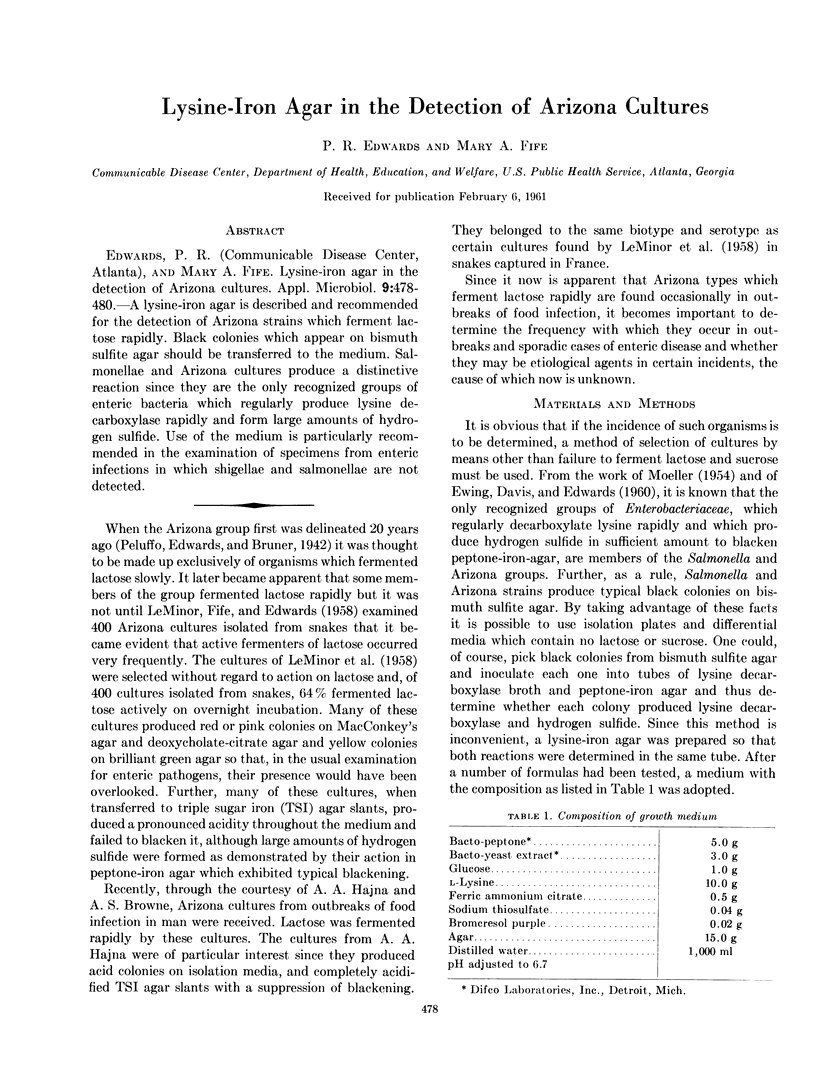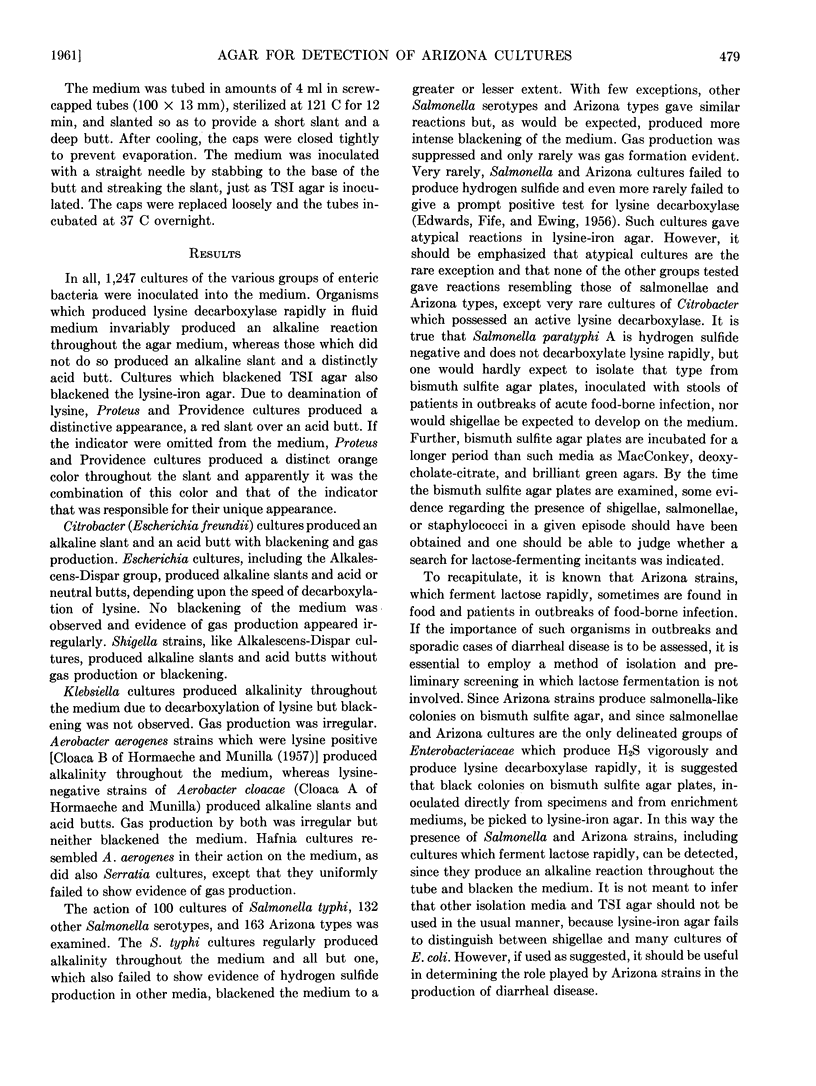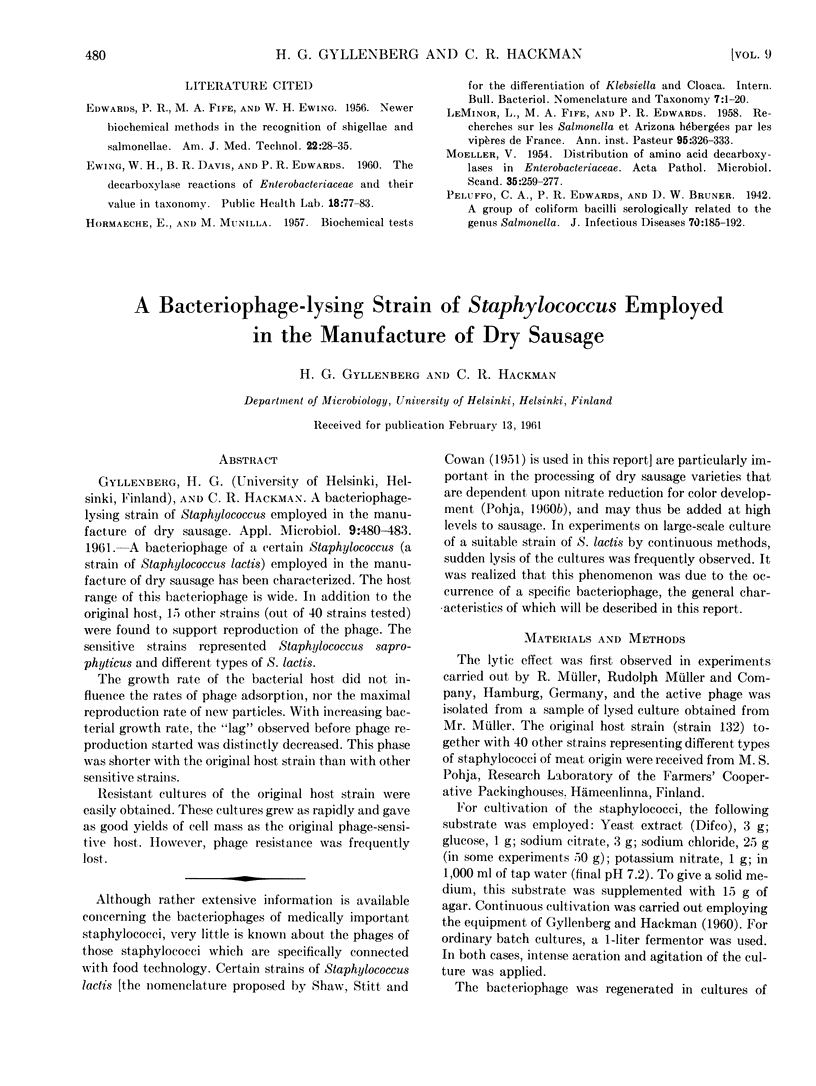Abstract
A lysine-iron agar is described and recommended for the detection of Arizona strains which ferment lactose rapidly. Black colonies which appear on bismuth sulfite agar should be transferred to the medium. Salmonellae and Arizona cultures produce a distinctive reaction since they are the only recognized groups of enteric bacteria which regularly produce lysine decarboxylase rapidly and form large amounts of hydrogen sulfide. Use of the medium is particularly recommended in the examination of specimens from enteric infections in which shigellae and salmonellae are not detected.
Full text
PDF


Selected References
These references are in PubMed. This may not be the complete list of references from this article.
- EDWARDS P. R., EWING W. H., FIFE M. A. Newer biochemical methods in the recognition of Shigellae and Salmonellae. Am J Med Technol. 1956 Dec;22(6A):28–34. [PubMed] [Google Scholar]
- LE MINOR L., FIFE M. A., EDWARDS P. R. Recherches sur les Salmonella et Arizona hébergées par les vipères de France. Ann Inst Pasteur (Paris) 1958 Sep;95(3):326–333. [PubMed] [Google Scholar]
- MØLLER V. Distribution of amino acid decarboxylases in Enterobacteriaceae. Acta Pathol Microbiol Scand. 1954;35(3):259–277. doi: 10.1111/j.1699-0463.1954.tb00869.x. [DOI] [PubMed] [Google Scholar]


